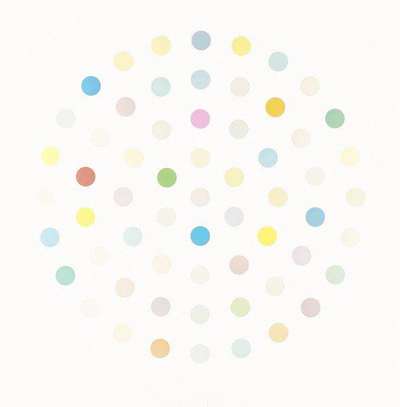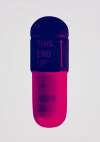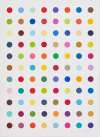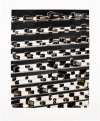Cinchonidine;
Ciclopirox Olamine; Cineole
Damien Hirst’s Cinchonidine; Ciclopirox Olamine; Cineole prints were completed in 2004. The absurd pairing of complex chemical compound titles with Hirst’s simplistic spot motif, here arranged into a circular grid, interrogates both the intersection of aesthetics, art and science and the possibilities of colour composition.
Damien Hirst Cinchonidine; Ciclopirox Olamine; Cineole For sale
Cinchonidine; Ciclopirox Olamine; Cineole Value (5 Years)
With £39316 in the past 12 months, Damien Hirst's Cinchonidine; Ciclopirox Olamine; Cineole series is one of the most actively traded in the market. Prices have varied significantly – from £2000 to £20833 – driven by fluctuations in factors like condition, provenance, and market timing. Over the past 12 months, the average selling price was £7863, with an average annual growth rate of 4.67% across the series.
Cinchonidine; Ciclopirox Olamine; Cineole Market value
Auction Results
| Artwork | Auction Date | Auction House | Return to Seller | Hammer Price | Buyer Paid |
|---|---|---|---|---|---|
 Cineole Damien Hirst Signed Print | 24 Oct 2025 | Christie's New York | £11,475 | £13,500 | £18,000 |
 Ciclopirox Olamine Damien Hirst Signed Print | 30 Apr 2025 | Dawsons, Berkshire | £3,570 | £4,200 | £5,500 |
Sell Your Art
with Us
with Us
Join Our Network of Collectors. Buy, Sell and Track Demand
Meaning & Analysis
Damien Hirst’s Cinchonidine; Ciclopirox Olamine; Cineole prints represent his most established genre of work: the spots. The spot paintings have come to be Hirst’s most iconic genre of works. Published in a set of three prints, this series shows three compositions with spots arranged methodically into a perfect circle, each the same shape and size, and depicted in a unique colour.
Stretching as far back as 1986, the spot paintings thematically recur throughout Hirst’s career in a number of artistic mediums and were first displayed at the landmark group show Freeze in London’s Docklands. These prints are markedly different from Hirst’s more famous spot paintings, notably in the use of a limited colour palette of blues and greys in Cinchonidine and in their circular rather than squared compositions.
The origins of these famous works are from 1988, when Hirst in the final stages of his Freeze exhibition painted two arrangements of coloured spots onto the wall of the warehouse, titling them Edge and Row respectively. The Freeze exhibition marked a turning point in Hirst’s career where he rose to fame in London. Hirst founded and curated this exhibition, showcasing the work of his friends and fellow students from Goldsmiths College, as well as his own. Seven years later Hirst won the Turner Prize and is now deemed to be one of the most influential artists of the last 30 years.
The titles of each print in this collection are based on names of chemical compounds, and indicate Hirst’s interest in investigating boundaries between science, aesthetics, medicine and art. The spots are set in equal distance from one another in formulaic compositions. The white clinical backdrop of each print recalls a laboratory and its kit, alluding to the crispness of coats, benches and hospital walls. Moreover, in its depiction of many spots, this print appears like a packet of medical pills.









